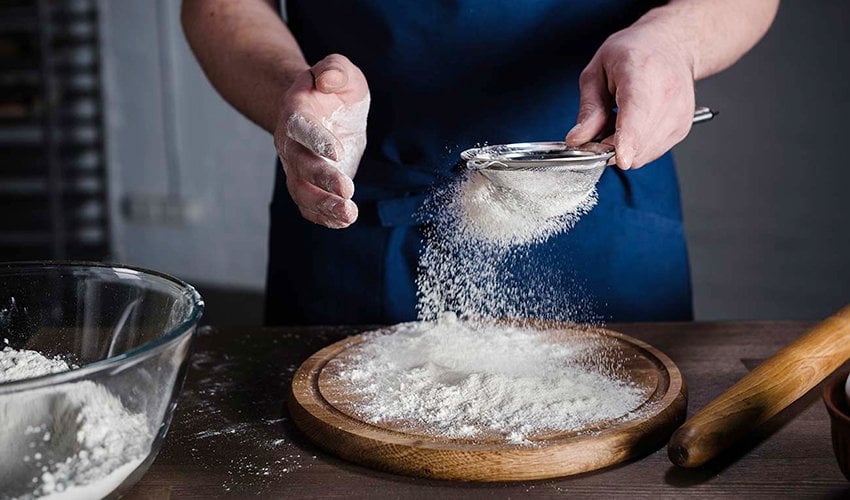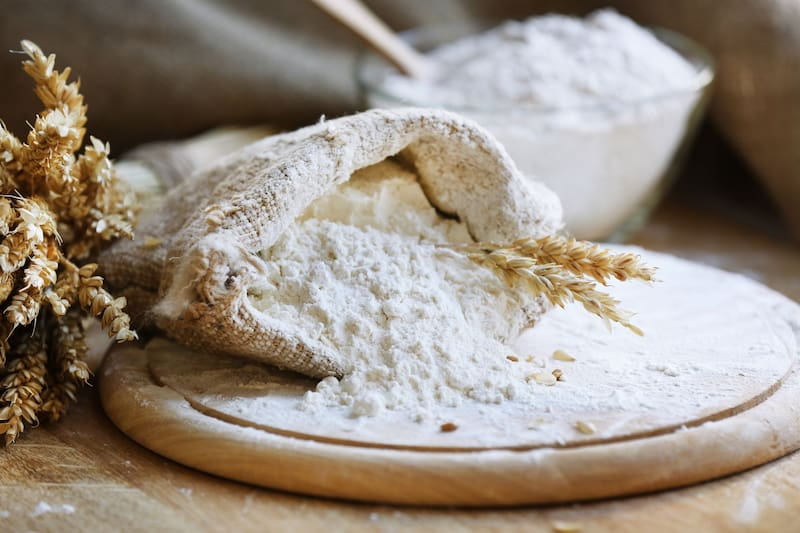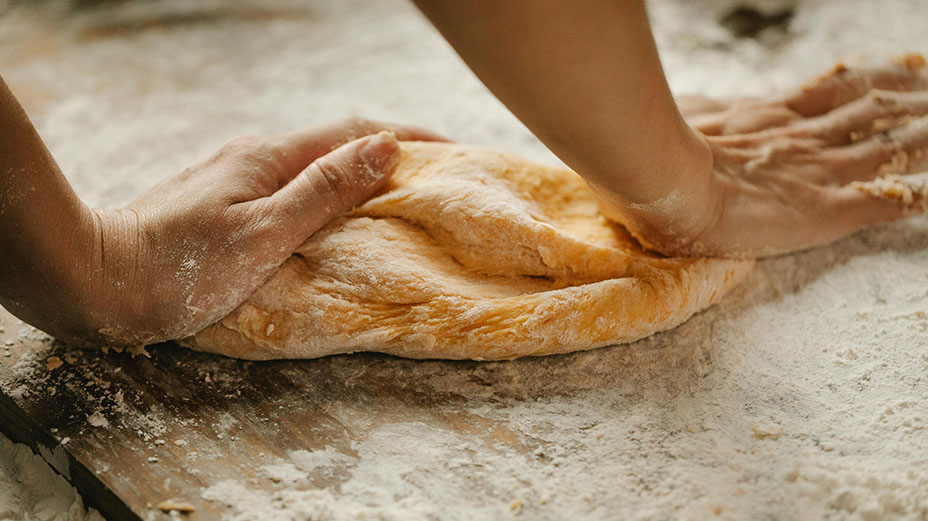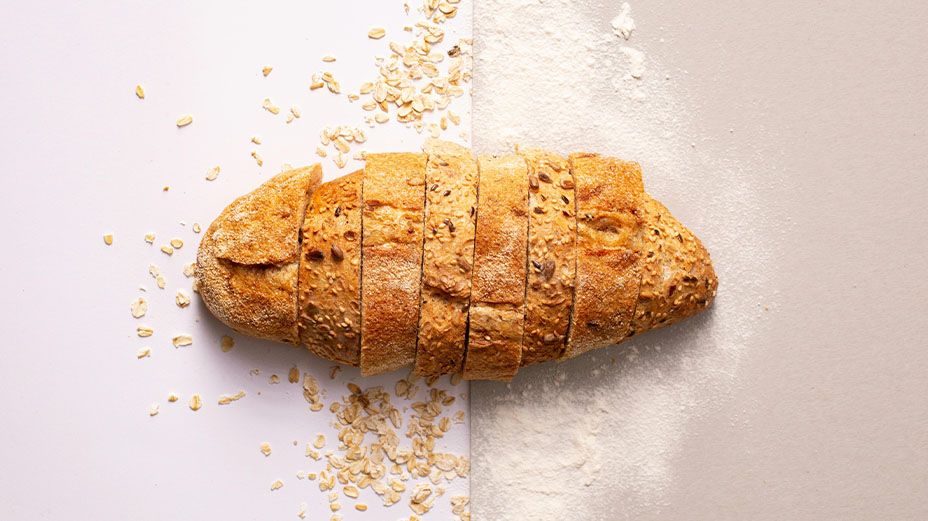It must have happened to you that you have faced the problem of flour becoming balls while cooking food or sweets. This not only makes the appearance of the food unpleasant, but can also negatively affect its taste and texture. In this article, we will examine the causes of flour lumping and ways to prevent it.
Causes of flour lumps:
Moisture: High moisture of flour is one of the main causes of its lumpiness. Moist flour clings to airborne particles and clumps together, forming small and large balls.
Example:
Suppose you want to bake a cake on a rainy day. The moisture in the air mixes with the flour and causes it to ball.
Flour quality: Lower quality flours have coarser and more irregular particles that stick together easily.
Example:
If you use cheap and low-quality flour to bake bread, the possibility of the flour becoming lumpy and spoiling the bread increases.
Failure to sift the flour: The flour particles stick together and form small and large balls.
Example:
If you don’t sift the flour before use, its coarse particles will stick together and form flour balls.
Adding flour quickly: The flour particles don’t get enough time to absorb the liquid and stick together.
Example:
If you add flour quickly to other ingredients while baking the cake, the flour particles will not have enough time to absorb the liquid and will become balls.
Not using a mixer: the flour particles are not completely separated and small and large balls are created.
Example:
If you do not use a mixer to mix the cake ingredients, the flour particles will not be completely separated and flour balls will form.
Use of cold liquids: flour particles do not get enough time to absorb liquids and stick together.
Example:
If you use cold water for the dough while baking bread, the flour particles will not have enough time to absorb water and the dough will become lumpy.
Not resting the dough: The flour particles don’t get enough time to absorb water and the dough becomes lumpy.
Example:
If you don’t rest it after mixing the dough ingredients, the flour particles won’t have enough time to absorb water and the dough will become lumpy.
Solutions to prevent flour from becoming lumpy:

- Use of high-quality flour: it has small and uniform particles and is less likely to become lumpy. To determine the quality of the flour, you can rub some of it between your fingers. If the flour is soft and smooth, it indicates its good quality.
tip:
Wholemeal flours are more prone to pelleting due to their larger particles.
Flour Sifting: Flour particles are separated and mixed evenly with other ingredients. Sifting flour also removes coarse particles and impurities.
tip:
To sift the flour, you can use metal or plastic sieves.
Gradually add flour: flour particles are thoroughly mixed with liquids. To do this, add flour gradually while stirring.
tip:
Adding flour gradually will help you control the consistency of the ingredients.
Using a mixer: completely separates the flour particles and prevents it from becoming lumpy. An electric or hand mixer can be used for this.
tip:
Using an electric mixer increases the speed and accuracy of mixing ingredients.
Use of warm liquids: flour particles get enough time to absorb liquids and the possibility of lumping is reduced.
tip:
Using hot liquids, especially in baking bread, helps to make the bread better and softer.
Resting the dough: The flour particles get enough time to absorb water and the dough becomes uniform and smooth. After mixing the dough ingredients, let it rest for 10 to 15 minutes.
tip:
Resting the dough gives the gluten in the flour time to activate and make the dough elastic.
Using special techniques:
Using a fork: You can use a fork to separate the balls of flour.
Using a sieve: If the flour balls are coarse, you can use a sieve to separate them.
Using an electric beater: You can use an electric beater to separate the balls of flour.
Additional notes:
If you have pelleted flour, you can sift it through a fine sieve to remove the pellets.
If your dough is lumpy, you can add some liquid and knead it again.
If you use high-quality raw materials, the possibility of flour becoming lumpy and spoiling your food or pastry will be significantly reduced.By following these simple tips, you can prevent the flour from becoming lumpy in cooking and baking and enjoy baking delicious and high-quality foods and sweets.




